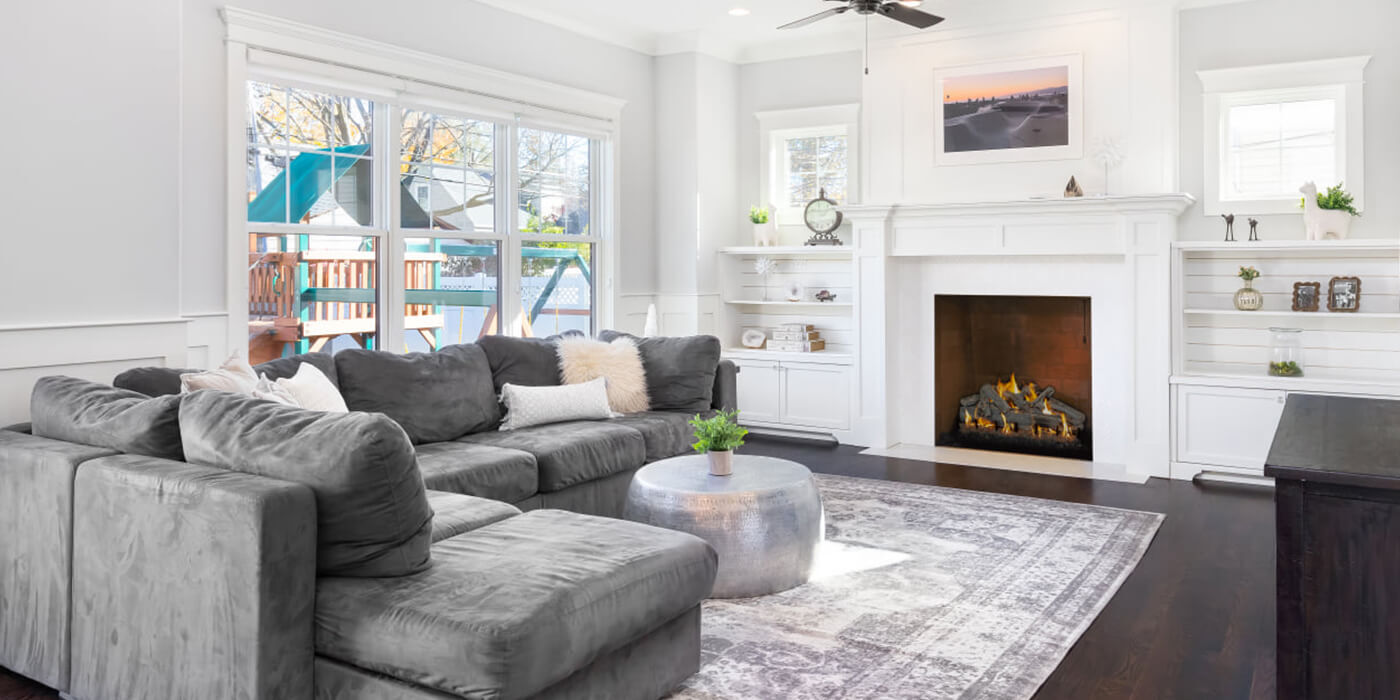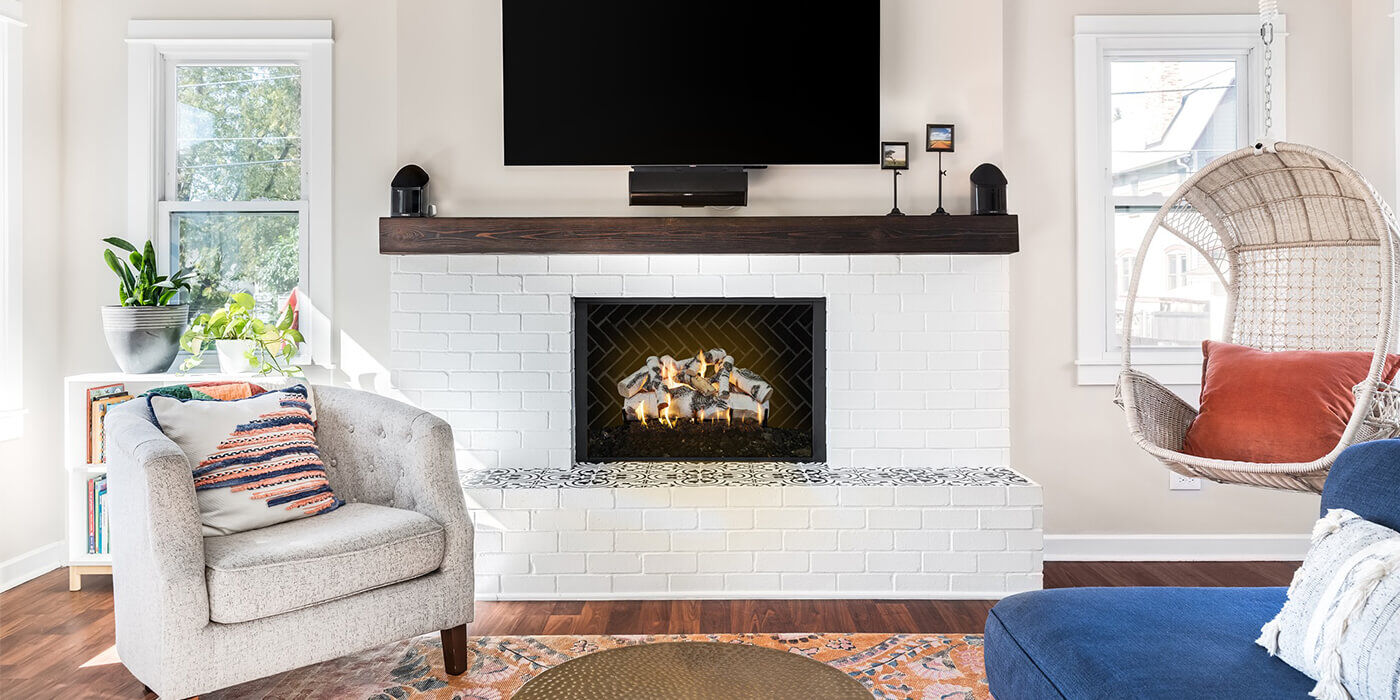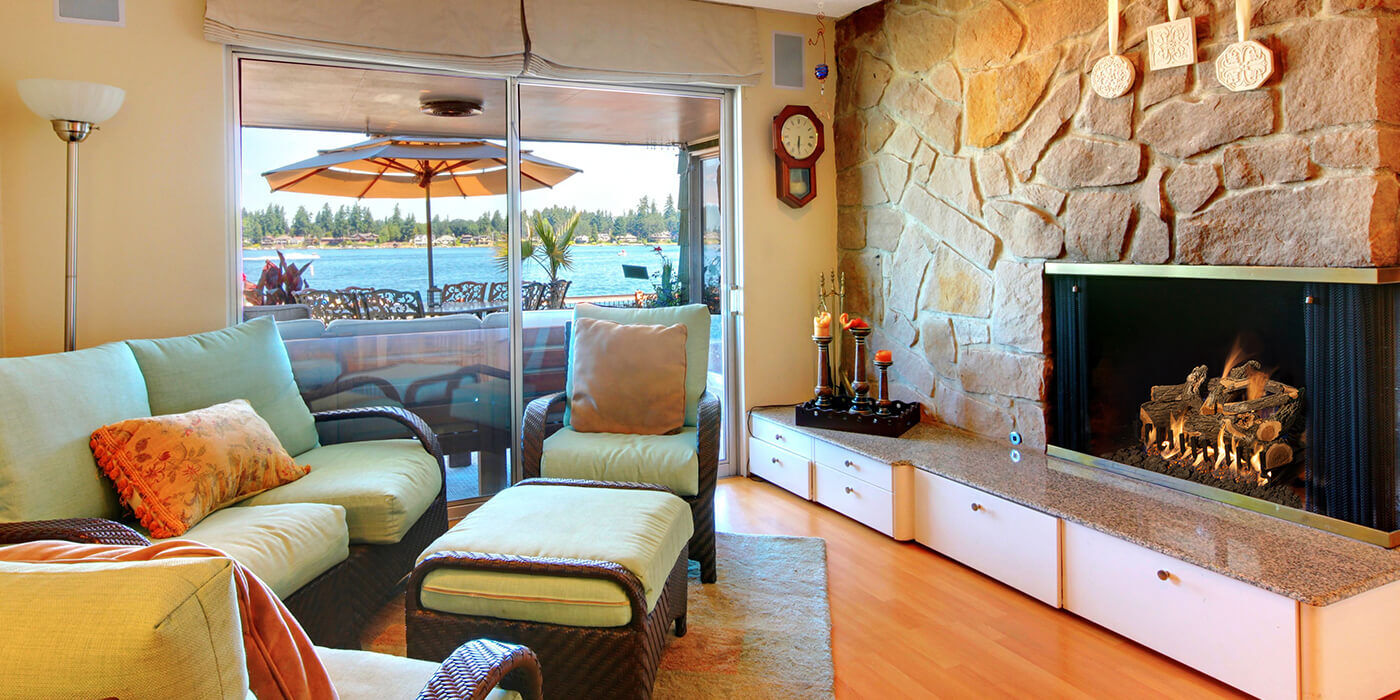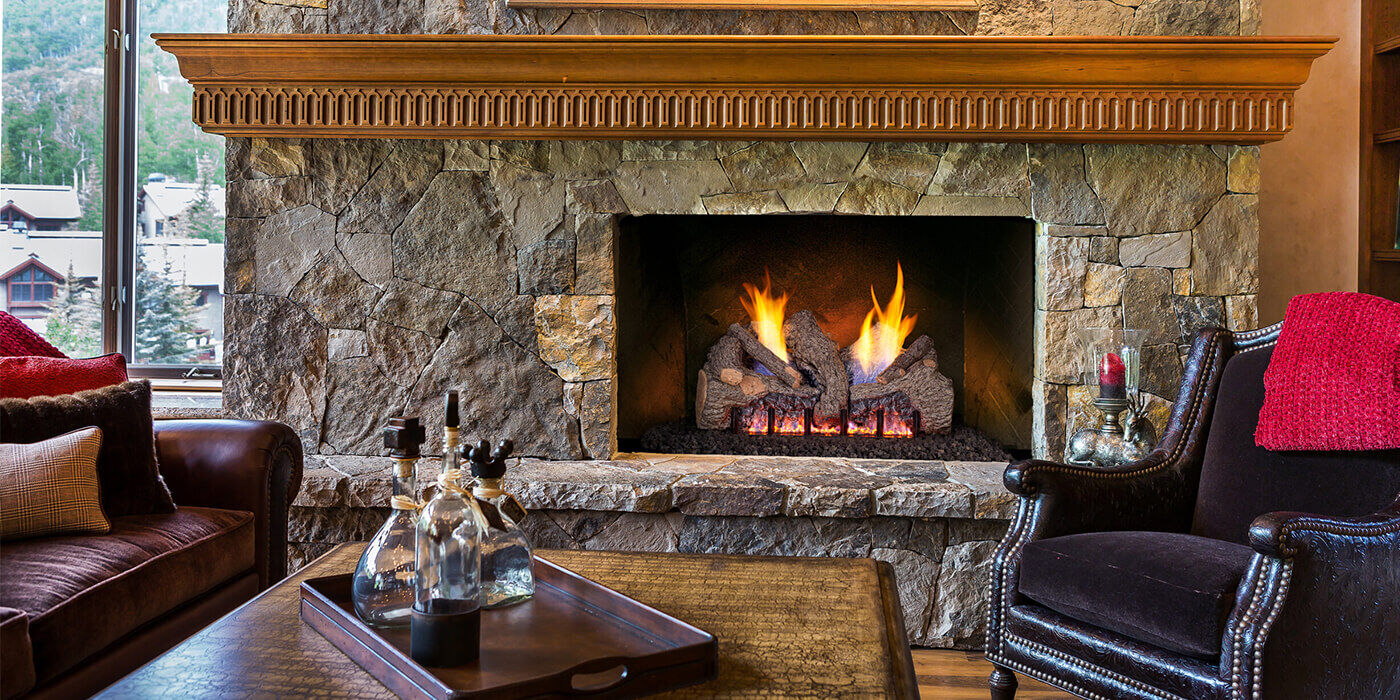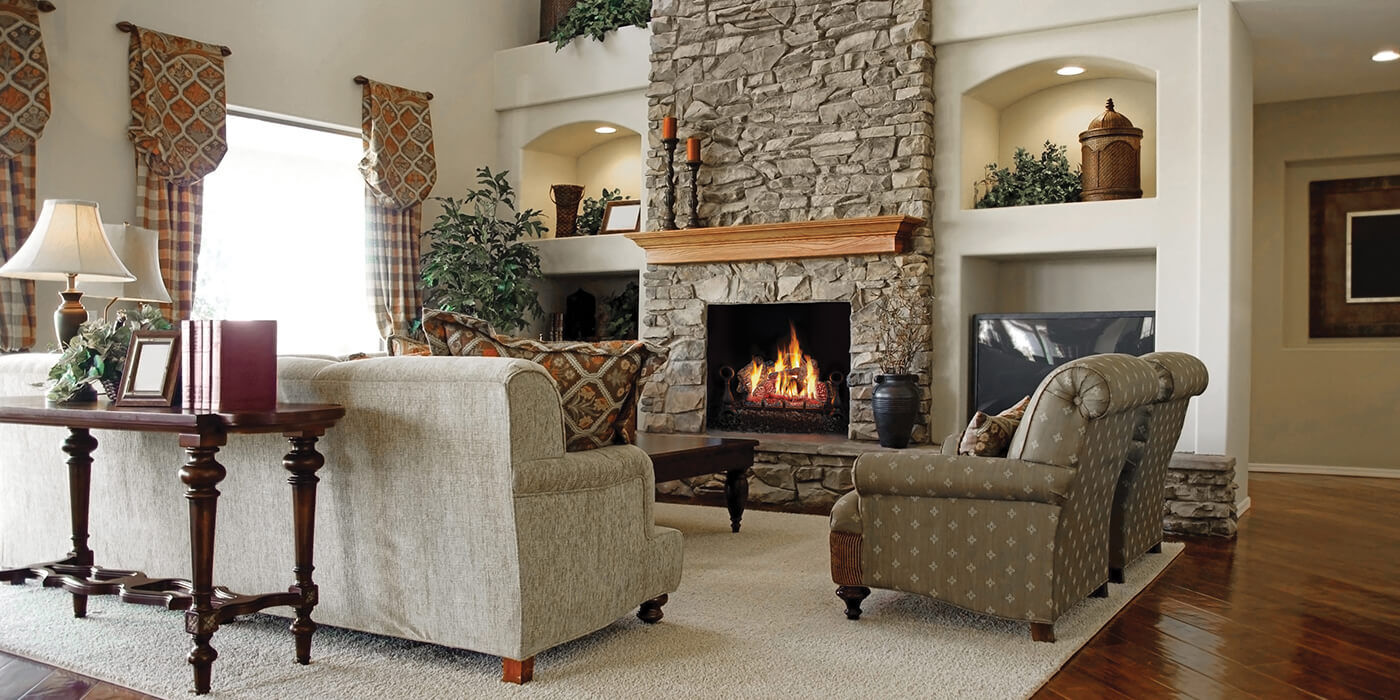By: Thomas Kearney, NFI Certified Master Hearth Professional
Last Updated: May 27, 2025
Gas logs are a realistic, convenient alternative to traditional wood burning fireplaces, allowing you to enjoy a natural, roaring fire with much less work and no mess.
However, if you’re new to gas fireplaces, you might be wondering how to light your new gas log set. In this guide, we’ll walk you through the process step-by-step for a safe and stress-free experience.
What Are Gas Logs?
Gas logs look like real wood but are fueled by either Natural Gas or Propane. They’re made of ceramic fiber or refractory ceramic.
Refractory cement designs are the most realistic looking, while ceramic fiber logs are excellent at retaining heat, radiating warmth even after you turn the fireplace off.
There are two types of gas log sets — Vented and Ventless.
🔥 Vented gas logs: If you're more concerned about aesthetics than heat, Vented gas logs are the best option. They achieve a realistic-looking fire with a natural flame pattern. Just like a classic wood fireplace, Vented logs need a working chimney with a damper. With the damper open, you could experience some heat loss.
🔥 Ventless gas logs: If you’re looking for maximum warmth, Ventless logs are the way to go. While the presentation isn’t as realistic as Vented logs, Vent-Free gas logs produce clean, smokeless flames and don’t require a chimney or venting system, keeping all the heat inside your home.
Safety First: What to Do Before Lighting
Before you even touch the controls, follow these safety steps:
✅ Read the owner's manual: Every log set is a little different. Your owner’s manual will have key information on settings and safety features.
✅ Check for gas smells: If you detect the scent of gas (often compared to rotten eggs), do not attempt to light anything. Leave the area and call a gas professional immediately.
✅ Ensure proper ventilation: If you’re using Ventless gas logs, make sure the room has adequate airflow.
✅ Clear the area: Remove flammable items, like decorations or curtains, near the fireplace.
Step-by-Step: How to Light Gas Logs
Lighting your gas logs involves two main steps: lighting the pilot light, then turning on the main flame.
How to Light the Pilot Light on Gas Logs
Locate the control knob. Most gas fireplaces have a control knob labeled Off, Pilot, and On.
- Turn the knob to ‘Pilot’: Press and hold the knob in this position. This allows gas to flow to the pilot light.
- Ignite the pilot light: Use the ignition button if your system has one. If not, use a lighter or fireplace match to ignite the pilot light manually while holding the knob in.
- Hold the knob in for 30–60 seconds: This keeps the thermocouple warm, allowing the pilot light to stay on.
- Release the knob: If the pilot stays lit, turn the knob to On to allow the main burner to ignite. If it goes out, repeat the process.
Lighting the Main Gas Logs
Once the pilot light is lit:
- Turn the control knob to ‘On’, this allows gas to reach the main burner.
- Use your remote or wall switch (if available) to light the main flame.
- Adjust the flame height if your model includes a flame control.
Pro Tip:
If you’re going to use your gas logs regularly, consider installing a remote-controlled electronic ignition system for added convenience and safety.
Lighting Gas Logs with an Electronic Ignition and Remote/Wall Switch
This system is more modern and user-friendly, typically requiring no manual ignition of the pilot.
- Make sure your gas supply is ON. Locate the gas shutoff valve and make sure it’s open.
- Check your batteries. Replace the batteries in both the remote and the fireplace receiver annually, or if ignition fails.
- Set your remote or wall switch to “ON.”
- You should hear a clicking sound as the system initiates the ignition sequence.
- Wait for ignition. Within a few seconds, you should see the burner light up.
- Adjust the flame using your remote (if it has that feature) or allow it to run at the preset level.
Pro Tip:
Some systems have safety timeouts. If it doesn’t light after a few attempts, wait a few minutes before retrying.
Shutting Down the Fireplace
When you're finished enjoying your fire:
- Turn the control knob to ‘Pilot’ if you want to keep the pilot light lit for easy relighting.
- Turn it to ‘Off’ to shut off all gas flow, including the pilot, and conserve energy.
Troubleshooting Tips
🛠️ Pilot light won’t stay lit? The thermocouple may be dirty or faulty.
🛠️ No spark from the igniter? Check the battery in the ignition system or ensure the igniter wire is properly connected.
🛠️ Still unsure? Call a licensed gas technician for a service check-up.
FAQs
Some do. Models with remote controls or automatic ignition systems often require electricity, while basic manual-ignition sets do not.
Yes, many modern sets come with or are compatible with remote controls or wall switches, making them more convenient to operate.
Yes, they can, especially Ventless log sets. This is why proper ventilation and a carbon monoxide detector are essential.
Yes, but the amount varies:
- Vented log sets: More aesthetic, less heat
- Vent-free log sets: More heat output, good for zone heating
We’re Here to Help
Do you have more questions about gas logs or need help finding the right set for your fireplace? Reach out to our NFI certified experts today at 800.919.1904.
More Resources
Discover all the gas log styles available and find your perfect match with our Gas Log Buying Guide.
Follow this beginner’s guide to safely install your new gas log set.
Learn the main differences between Vented and Ventless gas logs.
 |
Tom Kearney has been a Technical Sales Representative at Woodland Direct for over a decade, where he has honed his expertise in gas, wood, and pellet appliances as an NFI-Certified expert. Tom's dedication to customer satisfaction is exemplified by his work with high-profile clients, including assisting SpaceX President Gwynne Shotwell in sourcing five stunning fireplaces for her Texas home. When he's not helping clients find their perfect fireplace, Tom enjoys hitting the golf course, skiing down snowy slopes, and exploring new trails on his bike. Call him or one of our experts in fire at 800.919.1904. |
